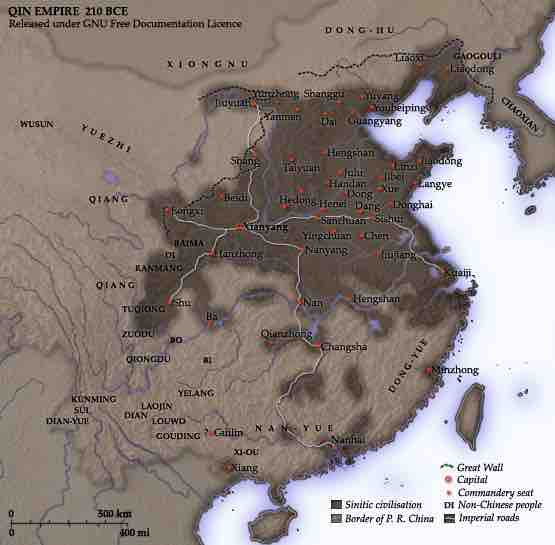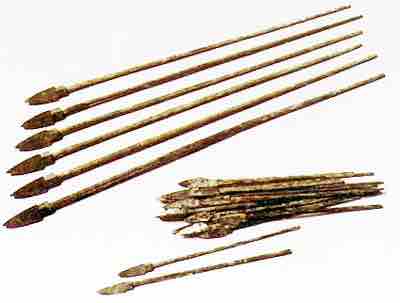History: The Qin Dynasty
The Qin Dynasty was the first imperial dynasty of China, lasting only 15 years from 221 to 206 BCE. The strength of the Qin state was greatly increased by the legalist reforms of Shang Yang in the 4th century BCE, during the Warring States Period. Legalism is a philosophy of focusing on the text of written law to the exclusion of the intent of law, elevating strict adherence to law over justice, mercy, grace, and common sense. In the mid and late 3rd century BCE, the Qin accomplished a series of swift conquests, first ending the powerless Zhou Dynasty and eventually destroying the remaining six of the major states, thus gaining control over the whole of China. This resulted in the first-ever unified China.

Qin Empire, 210 BCE
The colored territories show the approximate extent of Qin political control at the death of Qin Shi Huang in 210 BCE.
Accomplishments of the Qin Dynasty
During its reign over China, the Qin Dynasty achieved increased trade, improved agriculture, and revolutionary developments in military tactics, transportation, and weaponry. Qin Shihuang, the self-proclaimed first Emperor of the Qin Dynasty, made vast improvements to the military, which used the most advanced weaponry of its time. The sword was invented during the previous Warring States Period, first made of bronze and later of iron. The crossbow had been introduced in the 5th century BCE and was more powerful and accurate than the composite bows used earlier; it could also be rendered ineffective by removing two pins, which prevented enemies from capturing a working crossbow.

Picture of Qin Dynasty Arcuballista Bolts shown with Regular Handheld Crossbow Bolts, 5th- 3rd century B.C.
The crossbow was introduced in the 5th century BC and was more powerful and accurate than the composite bows used earlier.
The Dynasty is also known for many impressive feats in architecture, sculpture, and other art, such as the beginnings of the Great Wall of China, the construction of the Terracotta Army, and the standardization of the writing system.
Decline of the Dynasty
Despite its military strength, however, the Dynasty did not last long. When Qin Shihuang died in 210 BCE, his son was placed on the throne by two of the previous emperor's advisers, who attempted to influence and control the administration of the entire dynasty through him. The advisers fought among themselves, however, which resulted in both their deaths and that of the second Qin emperor. Popular revolt broke out a few years later, and the weakened empire soon fell to a Chu lieutenant, who went on to found the Han Dynasty. Despite its rapid end, the Qin Dynasty influenced future Chinese empires, particularly the Han, and the European name for China is thought to be derived from it.